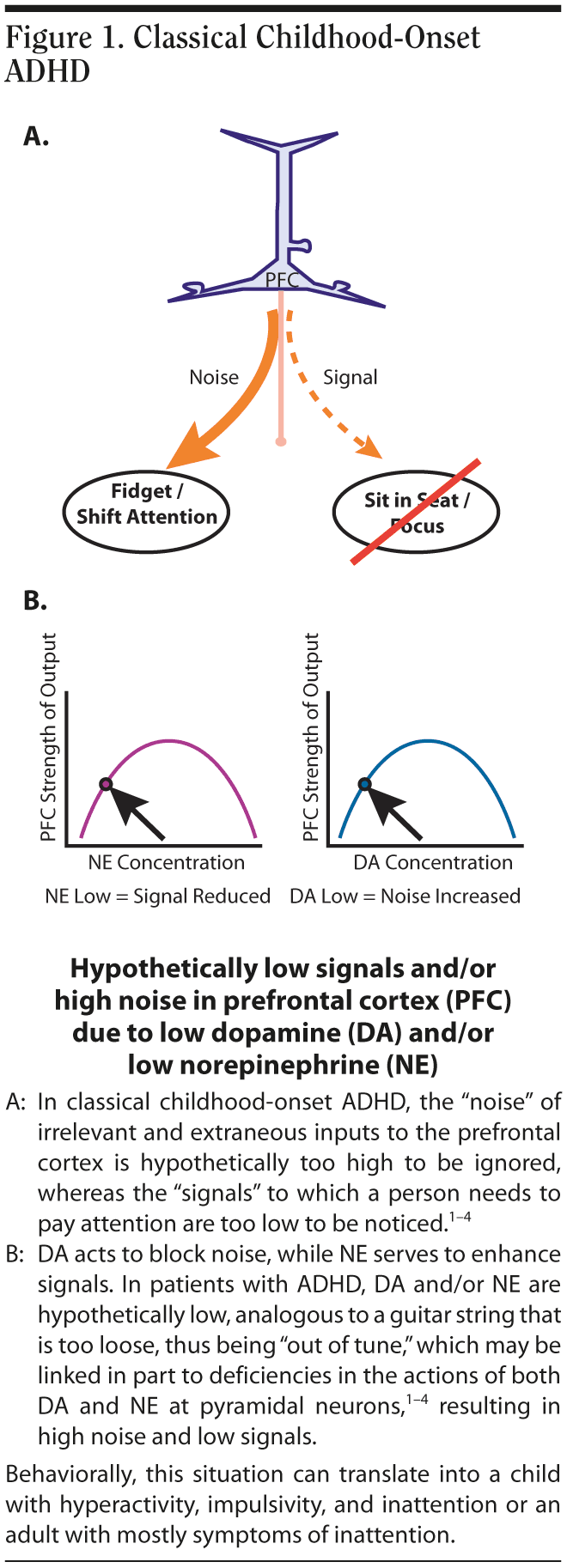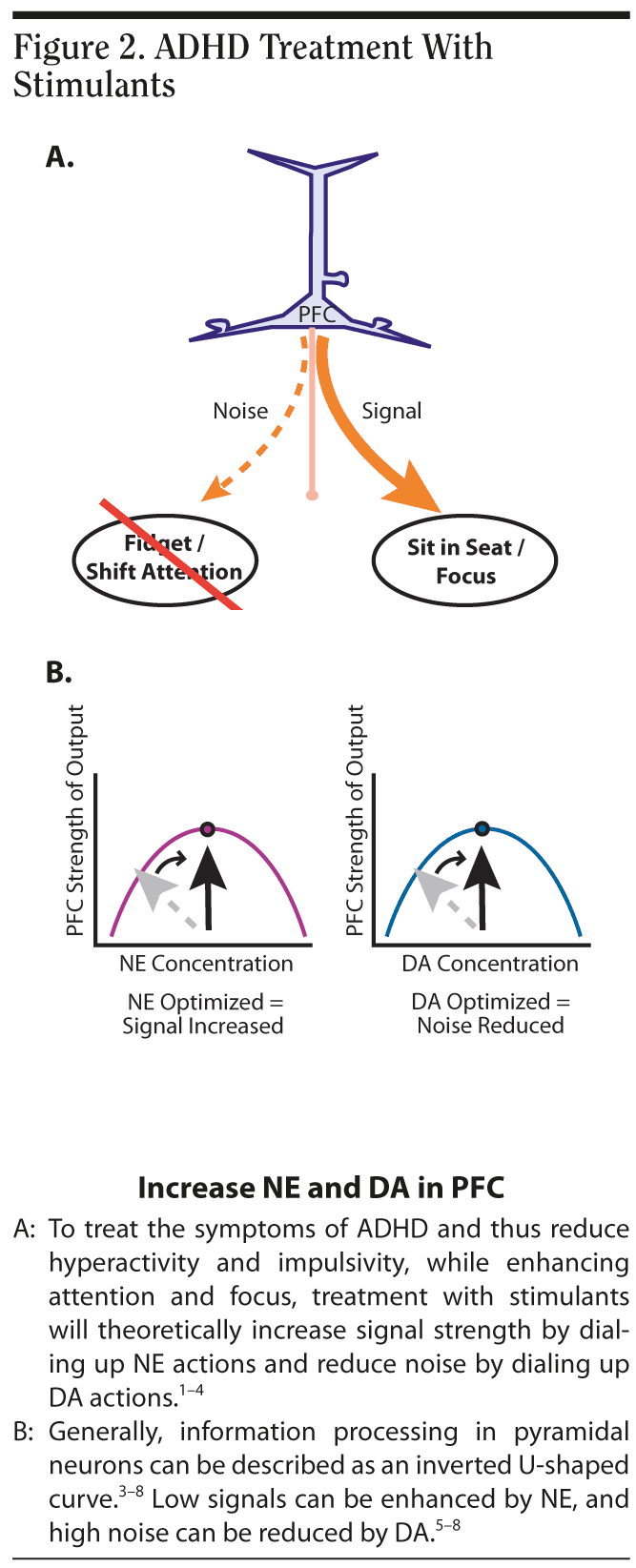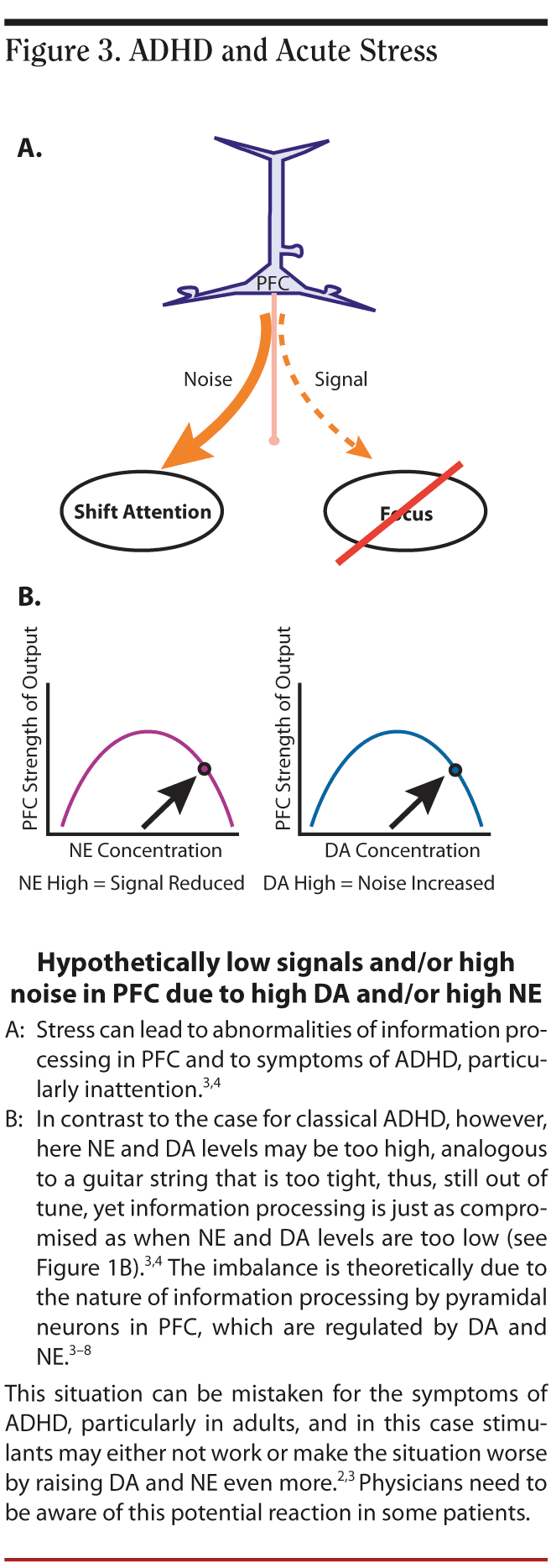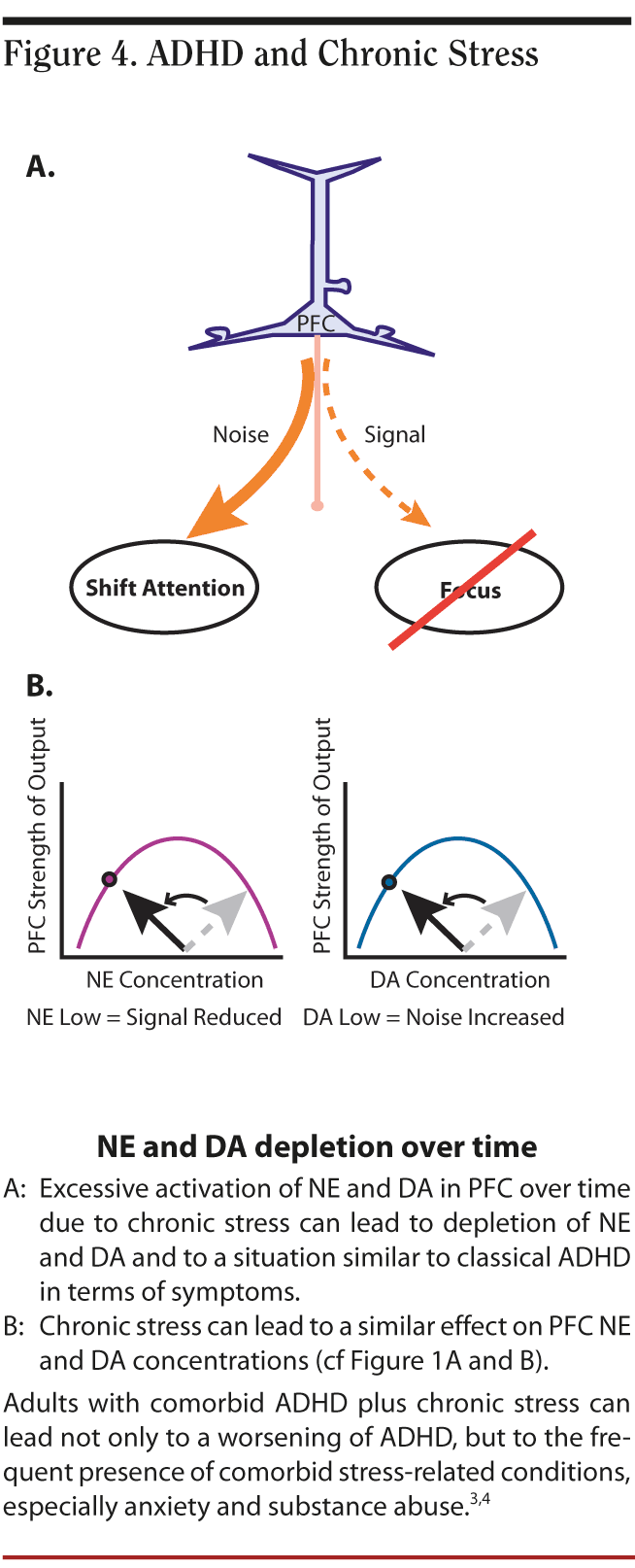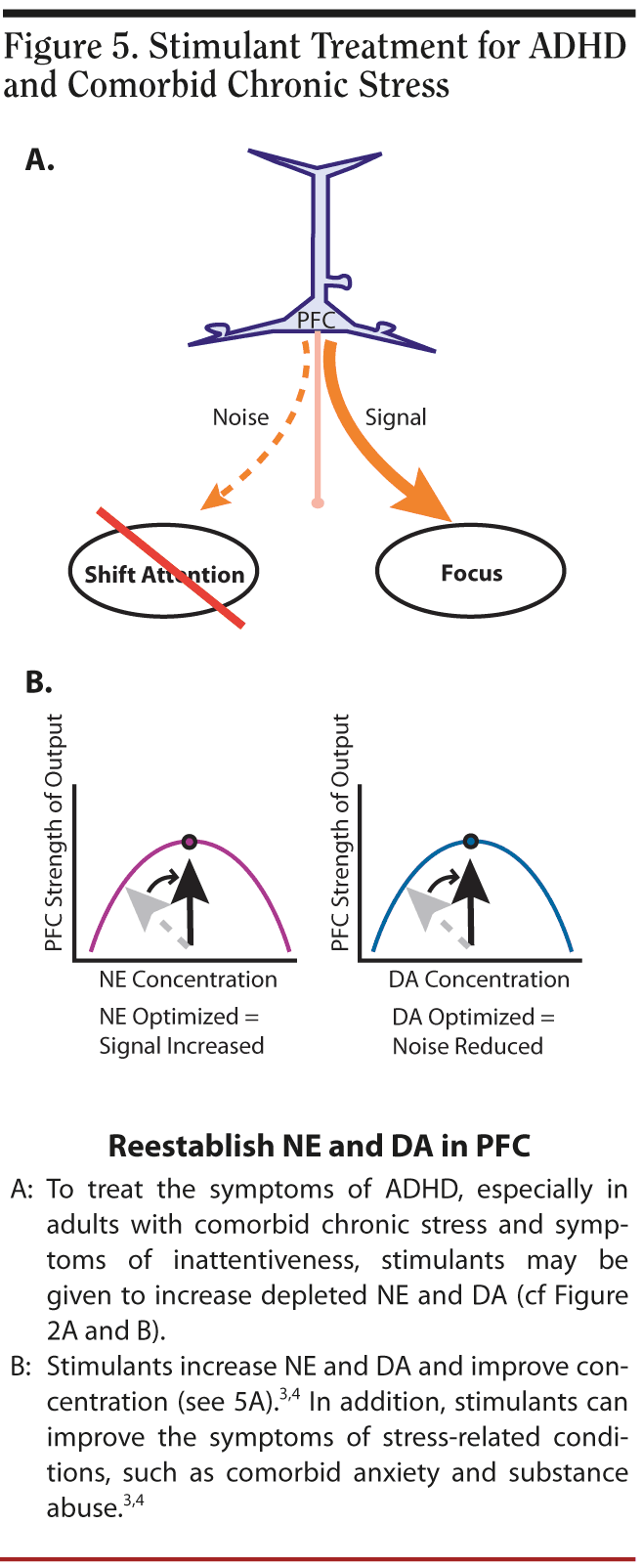References
1. Arnsten AFT. Catecholamine and second messenger influences on prefrontal cortical networks of "representational knowledge": a rational bridge between genetics and the symptoms of mental illness. Cereb Cortex. 2007;17(suppl 1):i6-i15. PubMed doi:10.1093/cercor/bhm033
2. Ramos BP, Arnsten AFT. Adrenergic pharmacology and cognition: focus on the prefrontal cortex. Pharmacol Ther. 2007;113(3):523-536. PubMed doi:10.1016/j.pharmthera.2006.11.006
3. Stahl SM. Stahl’s Essential Psychopharmacology. 3rd ed. New York, NY: Cambridge University Press; 2008.
4. Stahl SM, Mignon L. Stahl’s Illustrated: Attention Deficit Hyperactivity Disorder. New York, NY: Cambridge University Press; 2009.
5. Stahl SM. The prefrontal cortex is out of tune in attention-deficit/hyperactivity disorder. J Clin Psychiatry. 2009;70(7):950-951. PubMed doi:10.4088/JCP.09bs05416
6. Stahl SM. Norepinephrine and dopamine regulate signals and noise in the prefrontal cortex. J Clin Psychiatry. 2009;70(5):617-618. PubMed doi:10.4088/JCP.09bs05143
7. Vijayraghavan S, Wang M, Birnbaum SG, et al. Inverted-U dopamine D1 receptor actions on prefrontal neurons engaged in working memory. Nat Neurosci. 2007;10(3):376-384. PubMed doi:10.1038/nn1846
8. Goldman-Rakic PS, Cools AR, Srivastava K. The prefrontal landscape: implications of functional architecture for understanding human mentation and the central executive. Phil Trans R Soc Lond. 1996;351(1346):1445-1453. doi:10.1098/rstb.1996.0129
Brainstorms is a section of The Journal of Clinical Psychiatry aimed at providing updates of novel concepts emerging from the neurosciences that have relevance to the practicing psychiatrist.
From the Neuroscience Education Institute in Carlsbad, California, and the Department of Psychiatry at the University of California San Diego, and the Department of Psychiatry at the University of Cambridge, Cambridge, United Kingdom.
For reprint and financial disclosure information, go to www.psychiatrist.com/brainstorms.
doi:10.4088/JCP.09bs05890pur
© Copyright 2010 Physicians Postgraduate Press, Inc.

